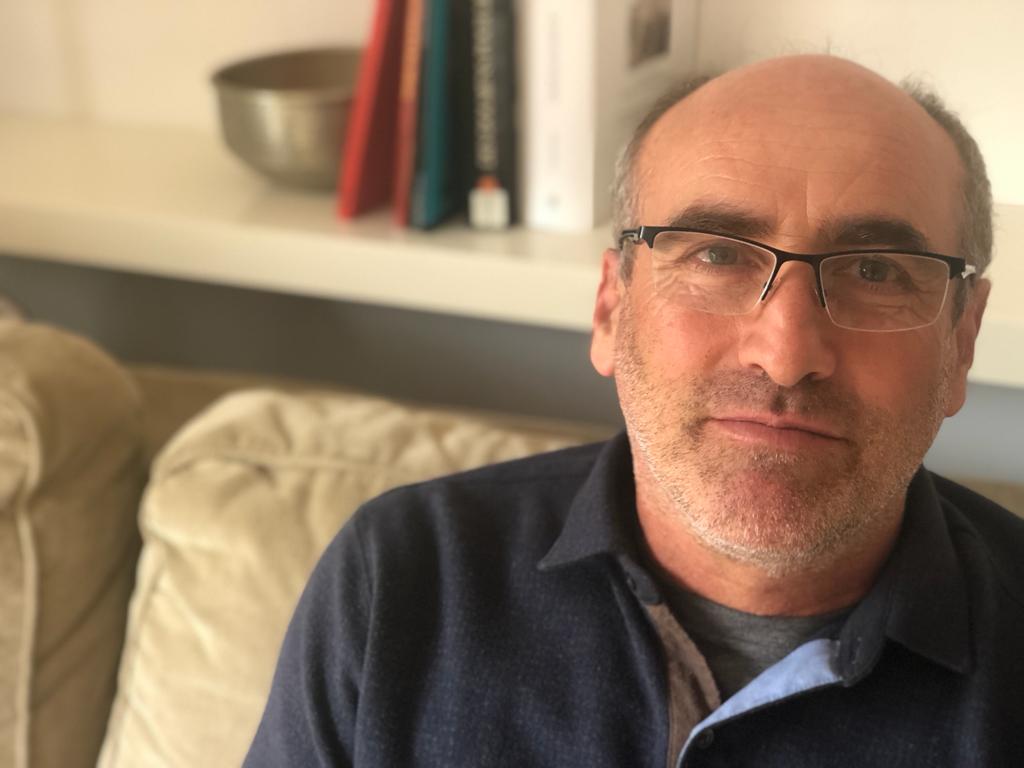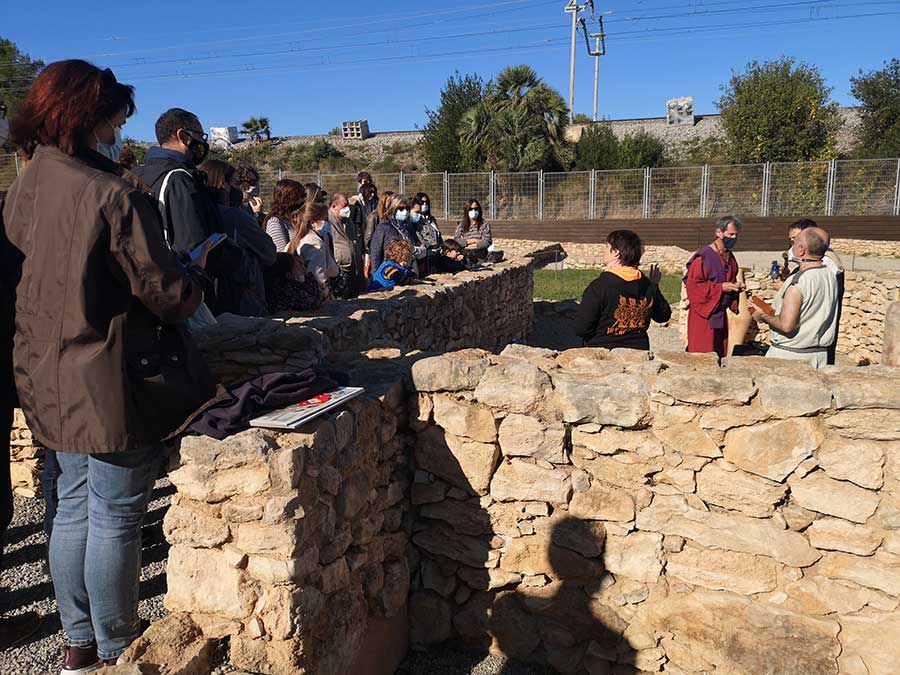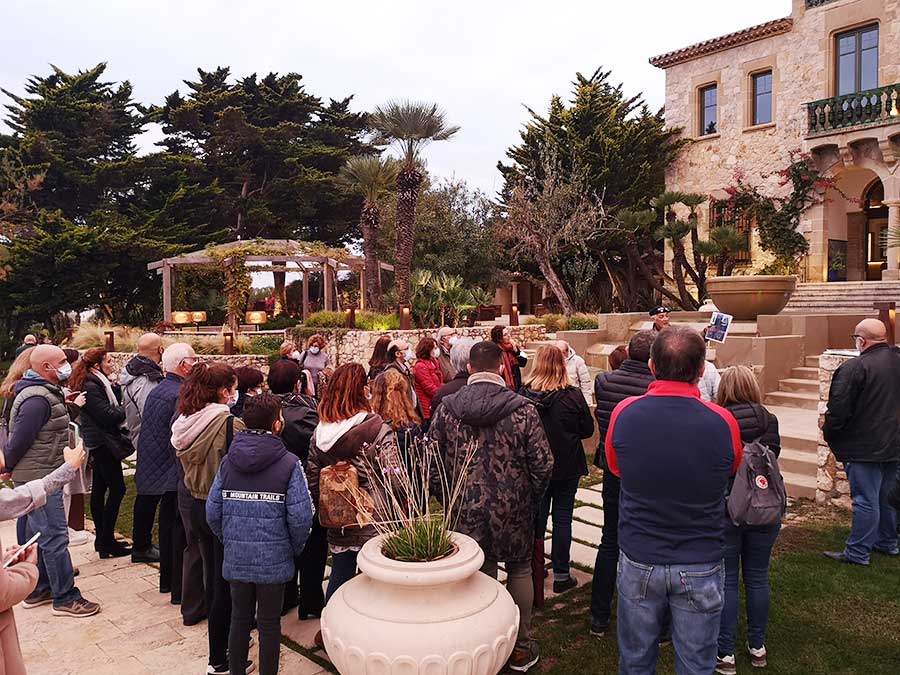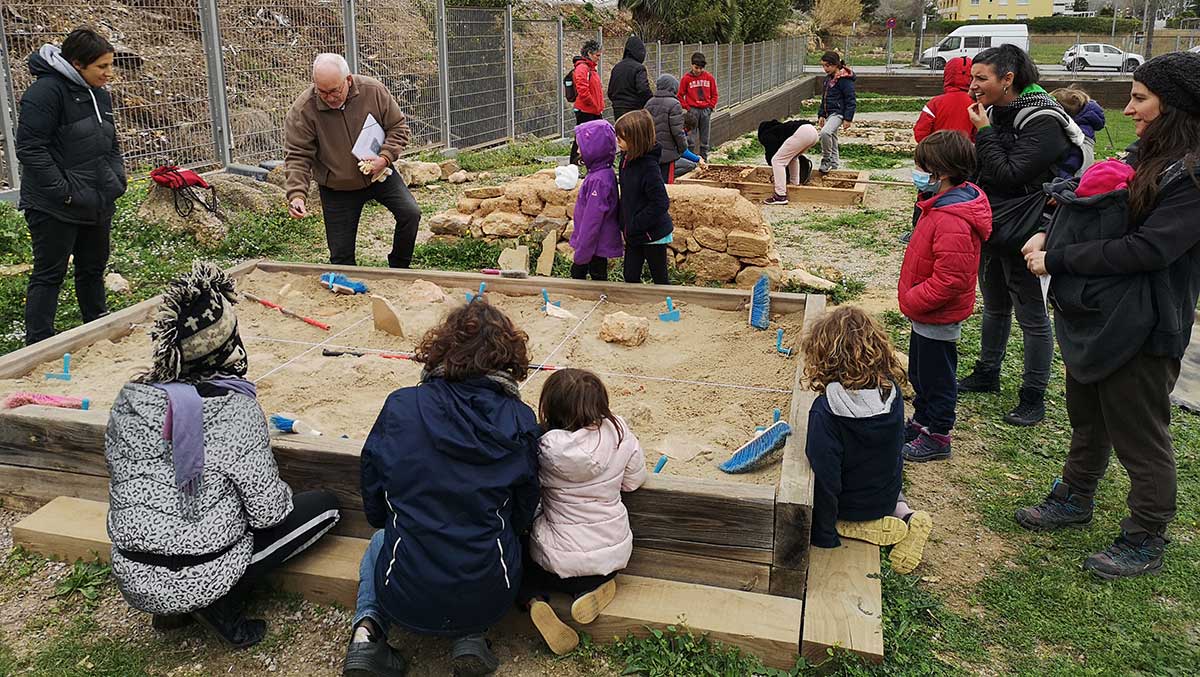At the end of the seafront promenade of Ribes Roges, in the town of Vilanova i la Geltrú, is the archaeological site of Darró or Adarró. In the Iberian period it was one of the most important settlements of Cossetan culture, and during the Roman Empire it was one of the main villas in the area.

Today it is an archaeological site that can be visited where adults can relive the history of Vilanova and the little ones will enjoy family activities. Tell us Joan Garcia Targa, a passionate archaeologist hired by the Local Archaeological Heritage Service of the Diputació de Barcelona, that you can get to know in person if you go to any of the free visits that he makes every weekend and holiday in Adarró. You can also arrange a weekday visit with him.
What is the history of the site?
The site of Adarró was discovered in the late 1970s or early 1980s. As a result of the construction of some apartments, a series of finds of Roman burial remains were made. Later, in the mid-1980s, with the construction of other apartment blocks, construction remains belonging to an Iberian settlement began to emerge.
Which institutions currently take care of the archaeological ensemble?
In the end this Iberian part ended up buying it from the Diputació de Barcelona, which gives maintenance and organizes the visits. There is also a part of municipal property, which is an Iberian part but with a Roman settlement on top. Within the same site we have a private part, the Xalet del Nin on the hill of Sant Gervasi. Currently, weddings and events are held, and scary films have been shot… From time to time we also visit it, because every time works have been carried out in the villa or in its garden, Iberian remains have come out. Therefore, the site of Adarró is much larger than the part that is visited.
What time do the different ruins of Adarró date from?
We know that the highest part, in the area of the Xalet del Nin, is the oldest. There we have found ceramics from the 5th to 4th centuries BC. They are ceramics of Greek origin that arrive here in Vilanova Adarró through trade with Empúries. And from the 4th century onwards they began to settle on the hillside that runs parallel to the coastline, that at that time was 150 meters further away. There was a kind of industrial area there. During the excavations it was seen that there was a blacksmith’s neighborhood and a neighborhood of potters, that is, they were organized as if they were medieval guilds, according to the work activities they did.
When do the Romans arrive?
All this Iberian settlement continues until the 1st century BC, which is when Adarró begins to have a Roman occupation and the Iberian settlement is abandoned. The Romans build on top of a part of what had been the ancient settlement. They begin to build what is called a Roman villa, which is a kind of farmhouse, to understand us. In it there are ovens to make amphorae and pack the wine they produced in this area, there are warehouses, presses… an industrial or pre-industrial installation. Roman villas were basically wine-making centres. And since this business works very well, after a while the owner could access a series of goods and construction tools and spaces that were not available to everyone. This can be seen in a part that was restored in 2017. When the train track was made in 1880 columns, capitals, fragments of mosaics appeared… a whole series of elements that indicate that there was a space with a certain luxury. It is a villa of a gentleman who must have had a first residence in Tarragona or Barcelona. Surely he had a farmer or a manager who exploited the land, the vineyard, the olive tree, the cereals… and he came from time to time to collect the benefits.
Children can enjoy the visit by getting their hands dirty in a traditional construction workshop and an introductory activity to archaeology.

Now offer family workshops designed for children. What does construction activity consist of?
It’s called “Let´s build like the Iberians of Adarró.” It consists of making “tovot” walls, mixing clay with straw and water. The kids get dirty that you don’t see, but they have a great time. They build a little bit like the Iberians did. They put this clay with water and straw in some moulds and make a kind of clay tiles or bricks that with two days of sun dry and harden.
This was the material and way of doing the Iberians here in the Adarró. Today when you visit what you see are the remains of the houses. There is a street that the houses were a part made of stone, which is the one that has been preserved, and the rest, that is, the walls, the ceiling and up to the first floor were made of clay, of “tovot”. All this has not been preserved, and what we see is like the skeleton, like the cementation of houses. They reach up to a maximum of 1.20 meters, but they would be much higher.
And the workshop “Archaeologist for a day”?
We have a sandpit. That is, a rectangle where we have put special sand and a grid. And we buried a series of aftershocks there. We explain to the children a little the ecological method, so that they do not limit themselves to making holes, but that they go down to little by little… And based on the objects they find and according to the way they have, we discuss what their function could be and we talk about everyday life in antiquity. We also explain what kind of pieces we find in the excavations and where they come from: Ibiza, Carthage, Greece, Rome… It should be noted that these workshops are carried out thanks to the selfless collaboration of Josep Carbonell Vidallet, retired and UNED humanities student who pours great passion and empathy with children and not so many children.
What coud we say that Adarró differs from other sites in Garraf or Catalonia?
It is a place that has a continuity of use that is occupied from the 5th century BC, in the Iberian period, until the 6th century after Christ. That is, for more than a thousand years people lived there.
Another interesting aspect is trade. In the excavations, objects of Adarró’s own production have been emerging, such as ceramics, glasses, jewelry, casseroles, amphorae, jars… And also objects that come from other parts of the Mediterranean: Greeks, Ibicencos, Carthaginians, Italians, southern France and other areas of the Iberian Peninsula of Beasts and Andalusia above all.
How do you identify the source of each object?
Ceramics is a fantastic invention that seems to be made by archaeologists, because since the Neolithic it has been changing production techniques, and it also has an iconographic and decorative aspect. It is an everyday object that reaches practically to this day and has followed fashions over time. For example, in Greek times they were mostly varnished in black, with spectacular figures and brutal quality. All this is very well studied in Greece and other sites in European countries, and it can be very precise if a piece is from the first half of the IV or the second half of the III, because they followed some very specific modes and topics. Then, in Roman times, ceramics go from blackish colors to a chocolate-colored orange reddish type called stealth because they sometimes carried a potter’s seal. They have much less quality than the Greek pieces, which are incredible, but they had much more diffusion, because the Romans did everything on an industrial level. At certain times it was fashionable to decorate with rabbits or gladiators or with erotic scenes… And these time lapses are very precise, with margins of twenty years.
Is there any piece that is especially emblematic of those found in Adarró?
Everything has been discovered here. A small altar has been discovered with Iberian remains where they did the ritual cremation of perfumes. From Roman times, for example, a snippet of the sundial has been discovered, and a few years ago, in 2018, we found what is called a foundation offering. The Romans, like many other cultures of antiquity when they made a new work or renovation of an important house, made an offering. They buried a very simple ceramic jug with a chicken egg inside. Because chicken egg was a symbol of fertility. And in this burial they performed a ritual with which they asked for help from the gods and ancestors to make that house work well: that the lands were fertile and had a good production, that the women of the family were also fertile… The particularity of this jug that we discovered in 2018 is that it came out practically entirely, except for a glass, and there were more than half an egg preserved. But the most interesting thing is that, when cleaning the outside, a graffiti came out in Greek with the name of a person: Estefanos.
Why is it in Greek and not Latin?
In Roman times people who had a lot of money put their children teachers of Greek origin. When Rome conquered Greece in the mid-2nd century BC, many educated slaves arrived in Rome, and many families put them in charge of their children. They were taught mathematics, literature, philosophy and Greek.
Who could be this Estefanos?
We have two hypotheses. One, who was the owner or son of the owner of the Roman villa. There is a second hypothesis that is more romantic but unlikely, which is that he was a trusted slave, a teacher. And that, upon completion of the ritual of that offering, the family asked this gentleman to finish burying the piece. And Estefanos, with a spatula, would have written his name before burying it. This hypothesis is more romantic but less possible.
The name Darró or Adarró comes from the Indo-European language and refers to two geographical accidents: the "small hill" of Sant Gervasi, and "the moving water" of the wetlands that used to be in the area.
The pieces found in Adarró where they are exhibited?
There is a part that is in the Víctor Balaguer Museum in Vilanova i la Geltrú, which is basically a art gallery but also houses a miscellany of collections of all signs from China, India, the Philippines, Central America, Egypt… And among these collections there is a showcase with pieces of Adarró.
Are there any plans to follow the excavations in Adarró?
Together with Empúries, Ullastret and Olèrdola, L’Adarró is one of the Catalan sites that has been excavating continuously for longer. Since it was discovered in the late 1970s it has practically been excavated continuously. The last campaign was a field of work in 2019. In 2020 and 2021 it was cut off by COVID-19. And this year I guess we can start the excavations again.

The Iberian settlement and the Roman villa of Darró or Adarró, extends at the end of the seafront promenade of Ribes Roges, on both sides of the train track, and the hill of Sant Gervasi.
Currently, part of the Iberian remains located at the foot of the hill can be visited. They correspond basically to an artisanal neighborhood that had the largest activity in the 2nd and 1st centuries BC. There is a main street with stone sidewalks and porches. On both sides there are a series of buildings where the ground floor was dedicated to craft activity and on the first floor the houses were located.
On the adjoining estate you can also visit the urban part of the Roman villa established at the beginning of the 2nd century AD.
In addition, the archaeological ensemble organizes a series of extraordinary activities such as historical recreations (Museum Night, Iberian Weekend or European Heritage Days), school visits and other groups, visits to the Chalet del Nin… All these initiatives promoted by the Diputació de Barcelona and the City Council of Vilanova are free.

Thank you for reading, sharing on your social networks and commenting.
Discover Vilanova i la Geltrú through our website, where you will find family accommodation, exciting activities, exquisite gastronomy, enriching culture and a wide range of shopping options. Plan your perfect vacation with us and take advantage of the unique shopping experience the city has to offer!